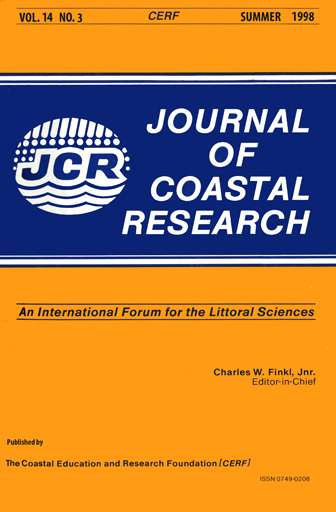Increasing the Accuracy and Resolution of Coastal Bathymetric Surveys
Keywords:
Bathymetry, surveying, nearshore, echo sounder, GPSAbstract
The development of coastal sediment budgets and models for sediment transport and shoreline change require bathymetric surveys with vertical resolution and accuracy of 5cm or better. Horizontal resolution and accuracy need to be at least 10cm to quantify bedforms and bars. Sleds are probably the most accurate, widely used system for nearshore surveys, but their contact with the bottom limits their speed, spatial resolution, and ability to operate in many situations. Boat-based echo sounder surveys can achieve a higher spatial resolution, and can operate where sleds cannot, but waves, tides, and other water-level fluctuations as well as boat dynamics and variations in the speed of sound in water can greatly limit their accuracy. Problems related to survey sled’s contact with the bottom cannot be overcome; therefore, echo sounder surveys must be improved.
The newly developed high-accuracy, high-resolution bathymetric surveying system (HARBSS) is designed to overcome the confounding effects of changing vessel draft, waves, and tides on depth soundings and to eliminate the need for measuring and modeling water level for a particular survey. The system combines Global Positioning System (GPS) receivers, and electronic motion sensor, a digital-gyro compass, a digital-analog echo sounder, a conductivity-temperature-depth probe (CTD), a computer, and custom software. The GPS antenna, compass, and motion sensor are aligned with the echo sounder’s transducer. Using a bias-free phase solution from the GPS data (X, Y, Z accuracy of better than 1 cm), attitude information from the motion sensor, and heading information from the compass, the position and aim of the transducer is determined for each sounding. The CTD provides data to calculate the speed of sound. Using the above data, the sounding depths and horizontal locations of sounding points are corrected in X, Y, and Z with respect to an Earth-centered ellipsoid.
In constant and uniform speed-of-sound conditions, HARBSS can provide soundings that are within 5.2 cm (mean error of 3.7 cm) of their true elevations. Horizontal accuracy is estimated to be within 10 cm. This accuracy can be achieved from a small, open boat that is rolling, pitching, heaving, or listing. Error analysis indicates that we may be able to decrease the error by one half with better synchronization and interpolation of the various data streams.


